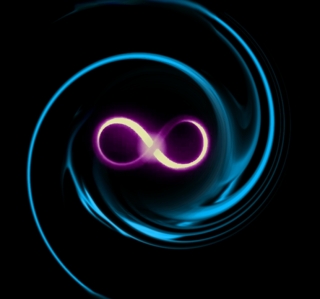Hallucination
Page 1 of 1
 Hallucination
Hallucination
Hallucination
From the Latin allucinatio indicates the perception of something that does not exist and yet is considered real. Jaspers considered the a. false perceptions with character body, which do not arise from the processing of actual perceptions (as opposed to illusions), but in a new way, and at the same time next to actual perceptions (as opposed to dreams). The definition suggested by the DSM-IV-R does not differ from the classical one, talking about sensory perception that has the compelling sense of objective perception, but it occurs in the absence of sensory stimulation of the relevant sensory organ. The critical capacity is absent for most of the authors, while for others it is not essential criterion for the definition of a. and the person can realize whether or not it is having an A.. (DSM-IV-R). Plato and Aristotle had spoken of a., Noting the close relationship with the dream images, the Scholastics were attributed to a twilight state where fantasy images appear as real. The first mention of a. as psychiatric symptoms is due to J.E. Esquirol, who speaks in terms still accepted in his treatise Des Maladies Mentales (1837). Depending on the level of structure of the false perception, a. are divided into simple, complex (presence of a meaningful pattern, identified with the perceived object) and combined (association of several perceptual structures). Hallucinations are considered normal in. hypnagogic (which are manifested in the phase of falling asleep) and hypnopompic (at the stage of awakening) and those that occur in conditions of prolonged deprivation of sleep and after intense stress. Particularly widespread and ego-syntonic would be a. mourning, especially in older people. In most cases, however, the presence of a. characterized psychopathological situations in which there is an alteration of the judgment of reality and in 90 cases 0ei is associated with the presence of delusions. The a. are not specific to a particular disorder, but the assessment of the intrinsic characteristics, such as, for example, the involvement of elective particular sensory areas and the main theme, is of considerable diagnostic aid. Occur in diseases of the sense organs (patients with sensory deprivation, hard of hearing, operated for cataract), psicorganici disorders (delirium and altered states of consciousness, abuse of amphetamines, cocaine, chronic alcoholism, epilepsy temporal) functional psychoses (schizophrenia, major depression, manic disorder, post-traumatic stress disorder, dissociative disorders, personality disorders). Can affect all sensory areas, including somatic sensation that spread coenaesthesia, and are therefore classified as follows.
1) Auditory hallucinations. Affect the perception of sound can be primary (noise, whistling, buzzing), but more often are rumors. Comment on the thinking or behavior of the patient, may have contained suggestive and threatening, be mandatory, dialoguing with each other, or repeat aloud the thoughts of the patient (echo of thought). Is a. more frequent in functional psychoses (mainly schizophrenia), but can also be found in paintings or toxic organic.
2) Visual hallucinations. They may have a different structure and present as elementary images (phosphenes, photopsias), partially organized (written, design), but also well organized, with three-dimensional features. If the object of a. is projected outside the visual field is called a. extracampiche, if the person sees himself or any part of her body to. are said autoscopic. Are typical of disturbances on an organic basis and with impaired mental status of metabolic origin, lesion (temporal epilepsy in the intercritical phase is critical both), or toxic (taking psychedelics). A. scenic complex will occur in specific organic frameworks, such as the pedicle hallucinosis, but also in some dissociative disorders.
3) Hallucinations of taste and smell. The subject feels smells and tastes unusual and, for the most part, unpleasant (smell of sulfur, rotten) are typical, but not exclusive organic frameworks.
4) somatic hallucinations. Can be divided into tactile and thermal, kinesthetic or drive and kinesthetic (perceptions regarding the body as a whole, such as the sensation of hearing organs turned, iron, rotting etc.). Are frequent in schizophrenia.
They still remember the hallucinations reflected (when a stimulus in a sense organ triggers hallucinations in another sense organ) and functional (triggered by a particular stimulation of the same organ and typical of chronic schizophrenia). In the second half of the nineteenth century, Jackson suggested that, like dreams, a. were a consequence of decreased cortical inhibitory tone of lower brain structures (brainstem, basal ganglia). Others have suggested a change of control mechanisms sudden influx of internal messages with the same sensorialization. Currently, the biochemical hypothesis calls into question, as for other symptoms defined production (delusions, formal thought disorders), altered the relationships between DA and 5-HT, due to increased activity or a decrease in DA 5-HT activity. This finding is supported by the regression of a. after neuroleptic treatment that correlates to an action of D2 receptor blockade of these molecules and, on the other hand, to the action of hallucinatory mescaline and LSD, that act, at least in part, by blocking the 5-HT receptors and reducing the turn-over central 5-HT. The morphological and functional data have shown a correlation of the auditory hallucinatory symptoms in schizophrenic subjects with volume reduction appears to the RM, the superior temporal gyrus and left amygdala, while SPECT result is an increase in the activity of hippocampal regions. In psychodynamic terms, the a. are interpreted as regressive mechanisms of conscious and unconscious fulfillment of wishes, fantasies about which projects a strong emotional dynamics.
Page 1 of 1
Permissions in this forum:
You cannot reply to topics in this forum|
|
|

